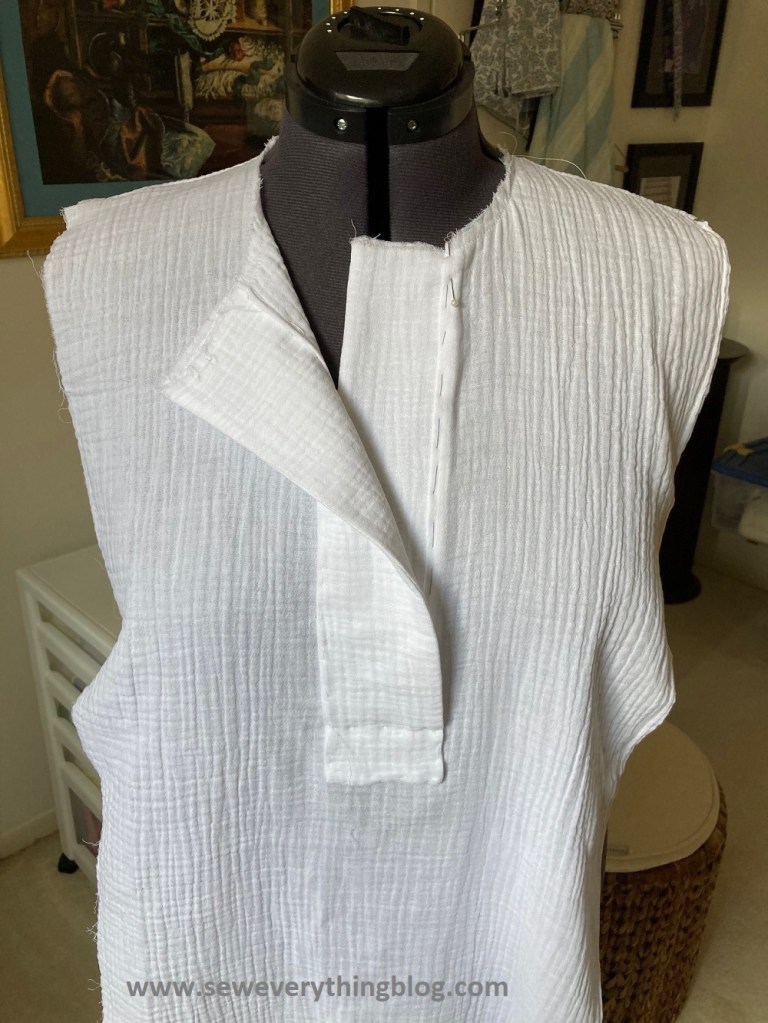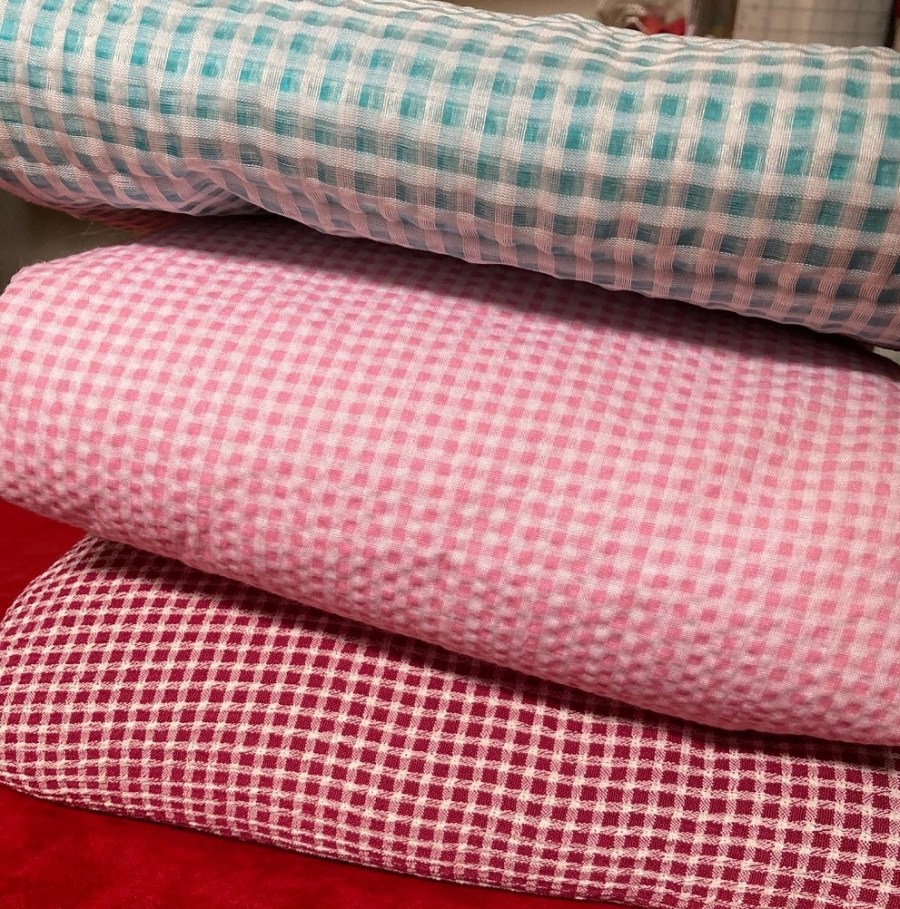While making the still unfinished kurta, I went down the rabbit hole of researching the cotton double gauze. Which led me to the world of puckered fabrics. Which led me to plisse. I’m familiar with seersucker but never paid attention to “plisse”. Also, now I know to the best of my knowledge that my cotton double gauze can technically be called “plisse” (pli-say).

Plisse and seersucker have similar looks, but differ in how they’re manufactured; limited research through my own textile books and online forays determined that:
- Seersucker gets the puckered look during the weaving process by keeping warp yarns slack (loose) at certain intervals. When the weft (filling) yarn is woven through, the slack areas form a pucker. This process is mostly ,done on, but not limited to, cotton – plain, striped, checked and plaid cottons make it ideal for summer wear.
- Plisse gets it’s pucker via chemical means. After the fabric is woven, caustic soda is applied at intervals, presumably depending on the pucker pattern desired – usually small checks or narrow stripes. The caustic soda shrinks that portion of the textile and ends up giving us something very similar to seersucker or pleated fabric. Also a great summer wear fabric if it’s on cotton. The process gives plisse an unexpected stretch.
- Are the puckers permanent? Here’s where I got two different outlooks – the Butterick Fabric Handbook (1975) notes that the plisse treatment is permanent. Other sources beg to differ in that plisse puckers are not permanent and are liable to iron out easily. Whereas, seersucker puckers stay put. I have so many questions.
- At point of purchase, how can you tell the difference between the two when they look almost identical? Other than relying on a manufacturer’s sketchy label? Well, one source advises you to try pulling a small section of the fabric taut; plisse puckers will disappear. A seersucker will maintain the puckers while being pulled taut or ironed.
In conclusion, do not iron plisse if you can help it, and want to maintain the texture — and that means minimum fussy details in your project. Here is where my yet-to-be-finsihed giant placket comes in – I had to press the double gauze to apply fusible interfacing, and now you can see the texture has almost disappeared. We’ll see if the puckers return after it is laundered. Why did I not use sew-in interfacing?? Don’t ask silly questions….

Intense curiosity drove me right into my fabric stash – it’s large enough that there had to be some puckered fabric there. Here are only three. A silk gauze, a poly-cotton and a rayon.

I just cannot stop digging now — it turns out that permanently pleated fabric is also called “plisse” by some because it uses the same textile treatment. Check out Issey Miyake’s “Homme Plisse” menswear line. Interesting trivia: the menswear Miyake “pleats” are wider than in his iconic women’s wear pleating.
There you go – once again I’ve shared my current obsession (at the expense of all other sewing tasks) with you. All fabric experts out there, please chime in – if my courses in clothing and textiles 50 years ago taught me anything about plisse, I’ve forgotten.
The spring of 2021 is to be immensely enjoyed!
Samina

Thank you so much for the research and information. For all the years I’ve been in the rag trade I did not know that plisse is double gauze. Just shows you that there is always something to learn. 😉
LikeLiked by 1 person
You are welcome! Now I know that plisse is a generic term for any fabric treated with this particular caustic soda application. One never stops learning….. 🙂
LikeLiked by 1 person
I like when you go down the rabbit hole, Samina! I learn so much. 😀
LikeLiked by 1 person
Me too, Olga! I love my rabbit hole forays 🙂
LikeLiked by 1 person
[…] Puckered cotton55 […]
LikeLike